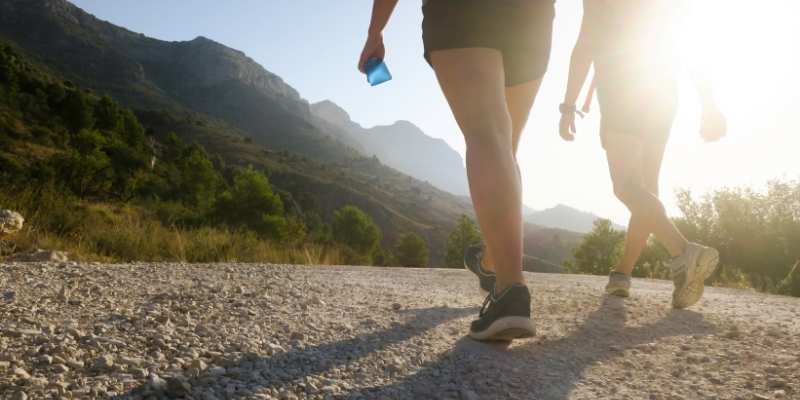Mountain hikers can easily spot rattlesnakes by their warning colors—black and yellow. It's good to keep an eye out for these snakes when hiking through the mountains. Rattlesnakes are dangerous. You have no idea where they will strike. It's essential to keep yourself safe when hiking in the mountains. Below are five tips to help you avoid getting bitten by a rattlesnake In The Mountains. I'll also give you some insider information about rattlesnakes to make sure you don't accidentally get bitten.
5 Tips For Avoiding Rattlesnake Attacks While Hiking In The Mountains

1. Don't hike alone
Hiking in the mountains can be a fun and rewarding experience, but it can also be dangerous if you're not careful. One of the most common dangers on hikes is rattlesnake attacks. To avoid this danger, always hike in groups. If you're walking by yourself, wear loud clothing and carry plenty of food and water. And if you do encounter a rattlesnake, don't panic. Remain calm and walk away from the snake slowly and carefully. If you have to use your physical force to get away from the snake, use a loud shout to warn others nearby.
Read more best hiking shoes
2. Know the Rules and Regulations
If you are hiking in the mountains, be aware of the rules and regulations concerning rattlesnake attacks. Rattlesnakes are dangerous animals and should be treated with caution. You need to know several rules if you want to avoid getting bitten by a rattlesnake. First, you should always carry a snake identifier to identify the type of snake that bit you. Second, never try to pick up a snake without first knowing how to handle it safely. Third, never hike alone in areas where there are rattlesnakes.
Finally, if you encounter a rattlesnake while hiking, do not run away from it. Instead, use the following tips to deal with the situation safely:
- Stay calm and remain still.
- Hold your hand out forward and speak in a calm voice.
- If the snake does not immediately release its grip, gently shake it off of you.
3. Don't hike during the summer

Hiking in the mountains can be an enjoyable experience, but it is essential to remember that rattlesnakes are present. When temperatures are high, and there is more sunlight, rattlesnakes are more active during the summer. This is when they are looking for food, and they may attack humans if they think they are prey.
If you are hiking in the mountains during the summer, wear long pants and sleeves, and avoid hiking during dusk or early morning hours when rattlesnakes are most active. If you do get bitten by a rattlesnake, don't panic. Don't try to shake the snake off you or hit it with anything. Instead, call for help and go to the hospital.
4. Always wear proper hiking gear
If you are hiking in the mountains, it is crucial to be aware of the dangers posed by snakes. One of the most common snake attacks is when a rattlesnake strikes. When hiking in the mountains, always wear proper hiking gear. This includes sturdy shoes and fits well with a long-sleeved shirt and pants. Make sure to keep your head and hands covered, and do not hike near any tall grass or bushes. If you do encounter a snake while hiking, do not panic; try to stay calm and back away slowly. If necessary, use a snake-repelling item such as a snake stick or hat to scare the snake away.
Read related article best running shoes and best flip flops
5. Use a snake detector

If you are hiking in the mountains, be aware of the potential for rattlesnake attacks. Here are a few tips to help avoid snake encounters:
- Use a snake detector to ensure there are no snakes in the area before hiking.
- If you encounter a snake, keep your distance and do not try to scare it away. Instead, stay calm and slowly back away.
- If a snake bites you, seek medical attention as soon as possible. Do not attempt to treat the wound yourself - professional help is essential in snakebite cases.
Conclusion
If you are planning a hike in the mountains, it is crucial to be aware of the dangers that lurk around every corner. One of the most common dangers hikers face is snake attacks, and there are many things that you can do to avoid this. By following these tips, you should be able to stay safe while hiking in the mountains and enjoy your experience without fear of being bitten by a snake.
Read related article best road cycling and best bowling shoes






